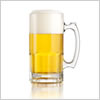 Germany: Beer sales drop in September marking 14th consecutive month of decline
Germany: Beer sales drop in September marking 14th consecutive month of decline
According to data from the Statistisches Bundesamt, German beer sales in September 2025 fell by 1.4% (–95,000 hl) compared to the same month last year, marking the 14th consecutive month of decline for German breweries and beer warehouses. Although this represents a clear improvement over the disastrous August figures, when sales had slumped by 14.4% year-on-year, the modest recovery was not enough to lift the market back into positive territory, Inside.beer reported on October 28.
Domestic sales slipped slightly by 0.2% (–11,000 hl), while exports plunged 7.1%.
Deliveries to non-EU countries dropped steeply by 20.6%, continuing a persistent downward trend. In contrast, exports within the EU rose by 4.3%, a gain mainly attributed to an additional working day in September 2025.
By the end of the third quarter, cumulative beer sales of German breweries and importers were down 6.35%, equating to a deficit of 4.09 million hl compared to the previous year.
Domestic sales accounted for a loss of 3.24 million hl (–6.13%), while exports to EU countries declined by 2.98% and to non-EU destinations by 13%. The data exclude alcohol-free beers, which remain one of the few growing segments in the German market.
While Germany’s beer market is in steep decline, one may ask about the reasons. However, the enormous downturn cannot be explained by a single cause. In fact, the reasons behind this “beer crisis” are multifaceted, driven by three main factors: demographics, cultural change, and economic pressure.
First, the demographic shift. Germany’s traditional beer drinkers are middle-aged men — and this group is shrinking. Since 1990, the number of German men aged 20 to 40 has fallen by one third. At the same time, an increasing share of younger men have a migration background, often from cultures where alcohol consumption is frowned upon or prohibited. Together, these factors have drastically reduced the base of regular beer consumers.
Second, the cultural transformation. The image of beer and the men who drink it has changed profoundly. The once proudly masculine tone of beer advertising — celebrating independence, toughness, and camaraderie — has largely vanished. Today, breweries promote beer as a unisex lifestyle product aimed equally at women and men. However, in trying to broaden their audience, many brands have lost more male consumers than they have gained female ones. This reflects a broader societal trend: younger generations value health, moderation, and gender equality, and alcohol no longer carries the same social prestige it once did.
Third, the economic squeeze. Inflation has hit consumers’ wallets and the hospitality industry alike. Between 2015 and 2024, retail beer prices rose by 29%, while on-premise prices climbed by 39%. Many pubs have now crossed the symbolic five EUR mark for a half-liter, while the minimum wage — rising from 8.50 EUR in 2015 to 13.90 EUR in 2026 — is putting additional strain on operators. As a result, many publicans face a painful dilemma: raise prices and risk losing guests, or absorb costs and risk closure.
The consequences are severe: 52 breweries closed in 2024, the highest number ever recorded. Many of them shut down quietly, unable to cope with rising energy and labor costs that have outpaced revenues for five consecutive years, according to Roland Berger. Numerous filling lines now operate only three days per week, and half of Germany’s 44,000 pubs that existed 20 years ago have disappeared.
Regresar





